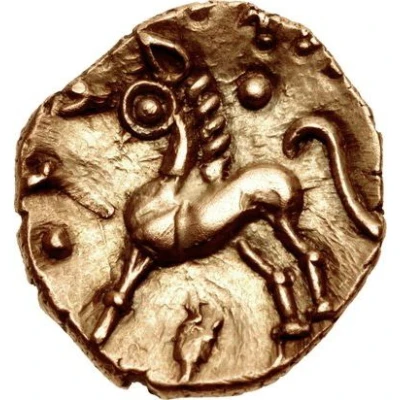


© Classical Numismatic Group, Inc.
Silver Unit "Atrebatic M" - Caratacus
| Silver | 1.18 g | 11 mm |
| Issuer | Catuvellauni tribe (Celtic Britain) |
|---|---|
| King | Caratacus (1st century AD - circa AD 50) |
| Type | Standard circulation coin |
| Years | 43-51 |
| Value | Silver Stater (1⁄50) |
| Currency | Stater |
| Composition | Silver |
| Weight | 1.18 g |
| Diameter | 11 mm |
| Shape | Round (irregular) |
| Technique | Hammered |
| Demonetized | Yes |
| Updated | 2024-10-09 |
| Numista | N#127857 |
|---|---|
| Rarity index | 100% |
Reverse
Eagle standing facing, slightly right, head left, wings displayed, on serpent; pellet within annulet in upper right field
Comment
Trinovantes & Catuvellauni, BMC 2376-84, Mack 265After the death of Epaticcus, his expansionistic policies were continued by his nephews Caratacus and Togodumnus, probably in the late 30s AD and ultimately led to the defense of Britain against the Roman invasion. Coins inscribed CARA have been traditionally associated with the historically attested son of Cunobelin, Caratcus was the leader of the British resistance against Rome. His coins appear in the same area as those of Epaticcus and he may have been his successor.
Interesting fact
One interesting fact about the Atrebatic M coin is that it features a unique blend of Celtic and Roman influences in its design. The coin's obverse (front) side bears the image of Caratacus, a prominent Celtic chieftain who led the resistance against the Roman occupation of Britain, while the reverse (back) side features a stylized image of a horse, which was a symbol of power and strength in Celtic culture. This blending of cultural elements reflects the complex history of Celtic Britain during the Roman era, where indigenous Celtic tribes interacted with and were influenced by the Roman Empire.



